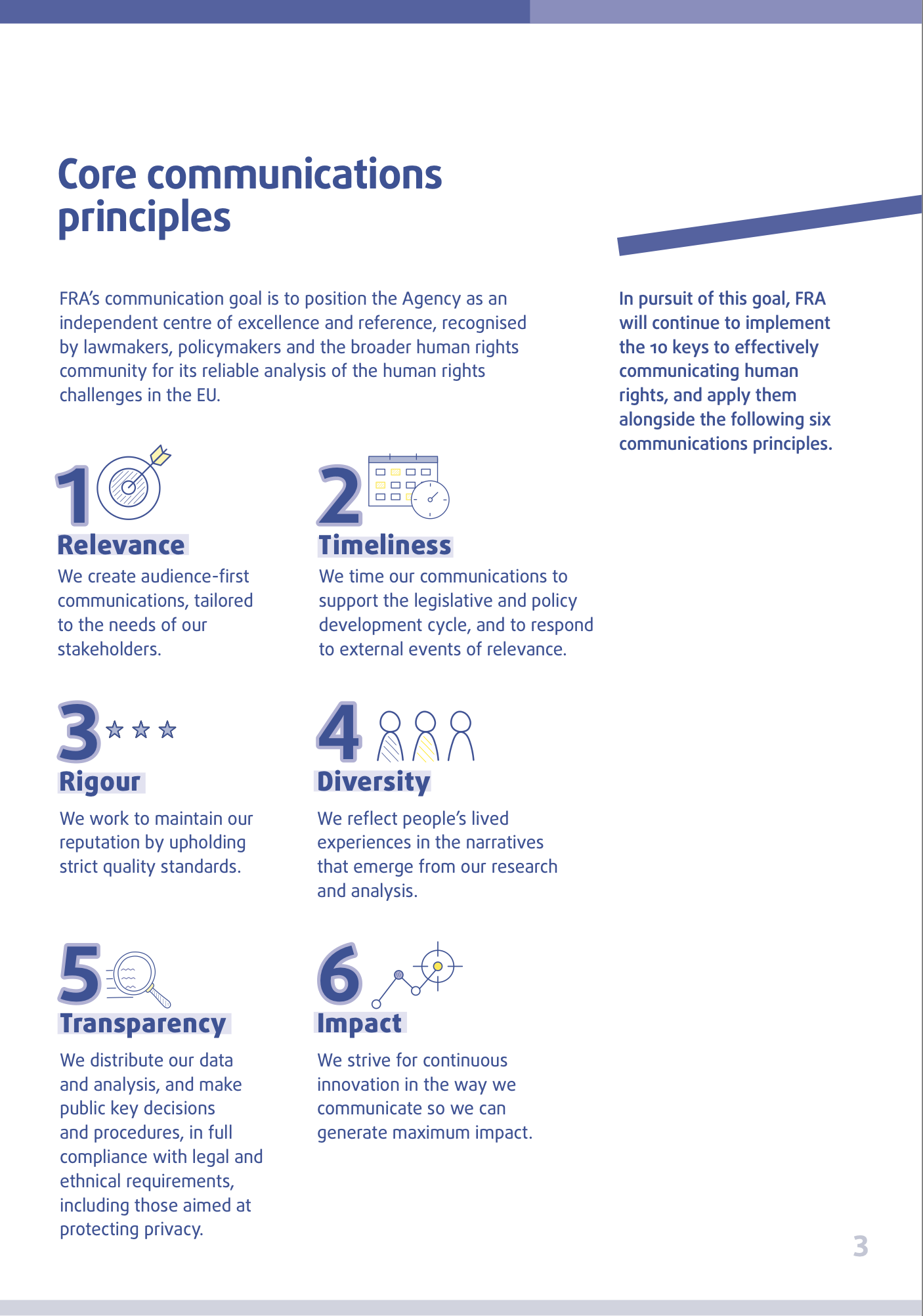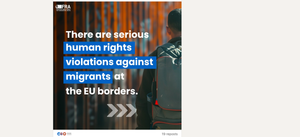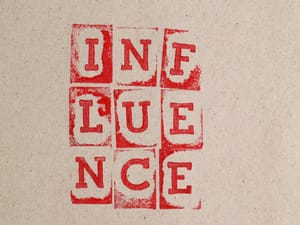Develop a digital-first communications strategy for the EU’s Fundamental Rights Agency. To actively promote human rights, freedoms and values amongst policymakers, civil society, the media and EU citizens.
As a research-based organisation, FRA had a long heritage of publishing reports and documents.
But in a digital age, dissemination is not the same as communication.
FRA asked us to deliver a five-year communications strategy which could adapt to geopolitical shifts, support their broader objectives, and reach all of their target audiences.
Developing a multi-channel Communications Strategy
Our shorthand for this project was to help to shift them from a ‘library’ approach to become a ‘broadcaster’, by adopting a multi-channel approach to reach distinct audiences, often with a more explicit call to action.
We recognised that FRA cannot be campaigners.
But their evidence and reporting can identify clear gaps between what EU Member States should be doing to maintain and uphold human rights and what is happening in practice.
And, by communicating effectively about these gaps, FRA can encourage policymakers at EU and Member State-level to take action.
On everything from AI through to trans rights.
As with many organisations, the internal challenge is how to prioritise what you communicate about, using the most effective channels available.
Following interviews with multiple stakeholders, analysis of FRA’s website and products and desk research we produced an audience-first communications strategy.
We set out to prioritise key themes and blend new communications tactics and channels with their more traditional approach to producing publications.
The results
The new communications strategy was adopted by FRA, alongside a new publications strategy and a new approach to internal communications as well.
FRA’s communications strategy is available to download from their website.
Their communications is going from strength to strength.








